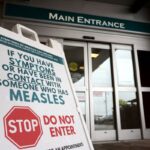As Kelowna General Hospital grapples with unprecedented strain on its emergency services, British Columbia’s Health Minister Adrian Dix has stepped forward, assuring residents he is “closely monitoring” the escalating situation that healthcare workers have described as nothing short of a crisis.
The hospital’s emergency department has become ground zero for what many frontline staff characterize as a perfect storm of challenges—severe staffing shortages colliding with dramatically increased patient volumes. Medical professionals report working under conditions that have pushed the facility to its operational limits, with concerns mounting about patient safety and care quality.
“The situation at Kelowna General requires immediate and sustained attention,” Minister Dix acknowledged during a press conference yesterday. “We recognize the extraordinary pressure on our healthcare workers and are implementing both short and long-term solutions to address these systemic challenges.”
According to internal reports obtained by CO24 News, emergency department wait times have doubled over the past six months, with some patients waiting up to 12 hours before receiving care. Healthcare workers have reported working multiple consecutive shifts due to staffing gaps, raising serious concerns about burnout and its potential impact on patient outcomes.
Dr. Sarah Winters, an emergency physician at Kelowna General, described the current conditions as “unsustainable,” noting: “We’re seeing unprecedented numbers of patients with increasingly complex conditions, but our resources haven’t scaled accordingly. Many of us are working well beyond our capacity.”
The crisis comes amid broader healthcare challenges across Canada, with hospitals nationwide struggling to recover from pandemic-related backlogs while facing chronic staffing issues. British Columbia’s Interior Health region has been particularly affected by demographic shifts, with Kelowna’s population growth outpacing healthcare infrastructure development.
Minister Dix outlined a multi-phase response plan that includes immediate deployment of additional nursing staff, expedited hiring processes, and collaboration with local medical programs to create accelerated pathways for new healthcare professionals. The plan also proposes expanded urgent care facilities throughout the region to reduce pressure on the emergency department.
“We’re committing $32 million in emergency funding specifically targeted at alleviating the situation in Kelowna,” Dix stated. “This represents just the first phase of our comprehensive strategy to strengthen healthcare delivery across the Interior region.”
However, healthcare advocates and opposition critics question whether these measures are sufficient to address what they describe as years of systemic underinvestment in healthcare infrastructure. Critics point to political decisions dating back several administrations that prioritized budget constraints over healthcare system resilience.
Dr. Michael Chen, President of the BC Medical Association, warned: “The crisis we’re seeing in Kelowna is a canary in the coal mine. Without fundamental reforms to how we fund, staff, and organize our healthcare system, these emergency situations will become increasingly common across the province.”
Community response has been swift, with local business leaders and municipal officials forming an emergency healthcare task force aimed at supporting hospital staff and identifying community-based solutions. The initiative includes temporary housing for healthcare workers, meal services, and transportation assistance for those working extended shifts.
As temperatures rise heading into summer, concerns grow about additional seasonal pressures on the system, including tourist-related emergencies and heat-related health issues that typically drive up hospital admissions during warmer months.
The situation raises profound questions about the future of healthcare delivery in rapidly growing mid-sized Canadian cities. As our population ages and urban centers expand beyond traditional boundaries, how will our healthcare infrastructure adapt to meet these evolving demands without reaching breaking points like what we’re currently witnessing in Kelowna?























